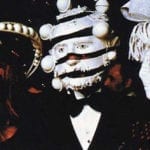 Weird Stuff
Weird Stuff  Weird Stuff
Weird Stuff  Our World
Our World 10 Ways Your Christmas Tree Is More Lit Than You Think
 Movies and TV
Movies and TV The 10 Coolest Stars to Set Sail on The Love Boat
 History
History 10 Things You Didn’t Know About the American National Anthem
 Technology
Technology Top 10 Everyday Tech Buzzwords That Hide a Darker Past
 Humans
Humans 10 Everyday Human Behaviors That Are Actually Survival Instincts
 Animals
Animals 10 Animals That Humiliated and Harmed Historical Leaders
 History
History 10 Most Influential Protests in Modern History
 Creepy
Creepy 10 More Representations of Death from Myth, Legend, and Folktale
 Technology
Technology 10 Scientific Breakthroughs of 2025 That’ll Change Everything
 Weird Stuff
Weird Stuff Ten Bizarre Facts About The Doge Meme
 Our World
Our World 10 Ways Your Christmas Tree Is More Lit Than You Think
 Movies and TV
Movies and TV The 10 Coolest Stars to Set Sail on The Love Boat
Who's Behind Listverse?

Jamie Frater
Head Editor
Jamie founded Listverse due to an insatiable desire to share fascinating, obscure, and bizarre facts. He has been a guest speaker on numerous national radio and television stations and is a five time published author.
More About Us History
History 10 Things You Didn’t Know About the American National Anthem
 Technology
Technology Top 10 Everyday Tech Buzzwords That Hide a Darker Past
 Humans
Humans 10 Everyday Human Behaviors That Are Actually Survival Instincts
 Animals
Animals 10 Animals That Humiliated and Harmed Historical Leaders
 History
History 10 Most Influential Protests in Modern History
 Creepy
Creepy 10 More Representations of Death from Myth, Legend, and Folktale
 Technology
Technology 10 Scientific Breakthroughs of 2025 That’ll Change Everything
10 Creepy Spirit Vessels From Around The World
There are many things in this world that people haven’t been able to explain, and for generations, they looked toward fetishes and totems for protection from outside forces, maintaining connections to ancestors, and, in some cases, trapping vengeful spirits to keep them from coming in the night. The faith humanity has in fetishes provides a fascinating view into our beliefs, fears, and thoughts on the unexplainable world around us.
10 Kuman Thong
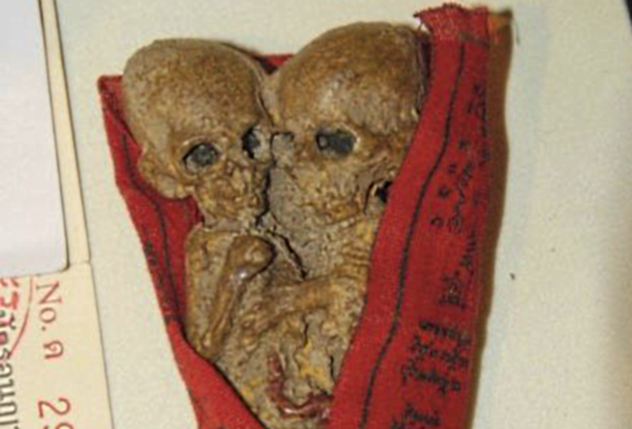
In 2012, a British man was arrested after he was found with what was possibly one of the most grisly finds that anyone in a security uniform has ever made. He was in possession of six human fetuses, which he’d bought in Thailand. He was taking the fetuses to Taiwan with hopes of selling them for far more than their purchase price.
The demand—and high purchase price—for the fetuses is due the belief in the kuman thong. Meaning “golden child,” kuman thong are effigies, charms, or fetishes that are thought to contain the spirit of a child, which will protect the home from evil. Some of the oldest manuscripts detailing the procedure for creating one of these totems involves rituals that need to be performed in a predawn cemetery and end with covering the roasted remains of a baby in gold leaf. (The kuman thong pictured above isn’t real.)
Strangely, it’s a tradition that we know got its start in a work of fiction. The 19th-century story of Khun Phaen tells of a man who marries the daughter of a sorcerer. Khun Phaen and his father-in-law have a falling out, and he learns that his pregnant wife has taken the side of her father and plans to poison him. Overcome with rage, he cuts the baby out of his wife’s womb, roasts it over a temple fire, and finds that he can talk to the spirit of the baby.
Today, most kuman thong are wooden children, but even they have a dark side. Because the kuman thong relies on violence for its power, the preferred wood from which to carve one comes from a demolished Buddhist temple. Less frequently, but more horribly, they’re made from real babies. In 2010, a Buddhist monastery was found to be in possession of 348 fetuses sourced from abortion clinics. While some prayed for the souls of the dead, others wanted to know if they were going to be made into kuman thong—roasted, lacquered, and covered in gold leaf.
9 Dogu
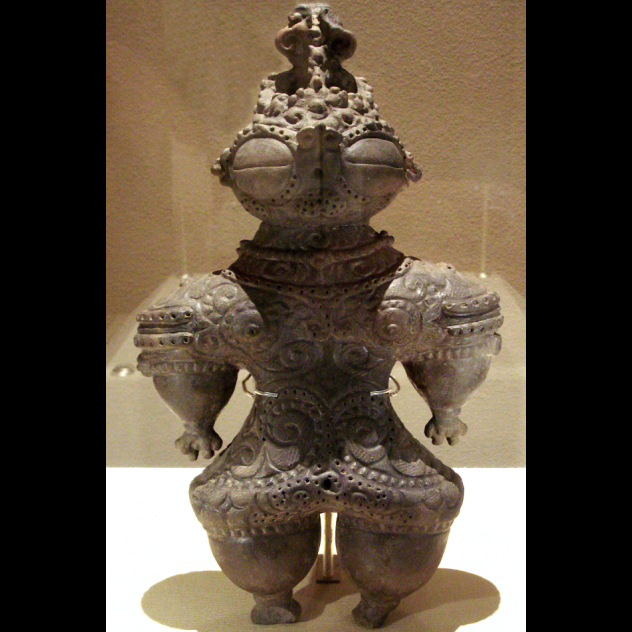
No one is quite sure what the purpose of the dogus was, but with many of them being found in graves or apparently broken on purpose, they clearly had a strong, ritualistic importance for those who made them. While they’re said to be proof of an ancient alien race by a certain portion of the population, their more earthly explanations are no less fascinating.
The oldest dogu date back to the Jomon period of Japanese history, from 12,500—300 BC. The clay figures are abstract depictions of humans or animals, but there’s often no doubt as to just who or what they’re supposed to represent. Three of them are designated as National Treasures of Japan, and thousands—somewhere around 18,000, to be precise—have been found. The clay figures come in all shapes and sizes, from 1-meter-tall (3 ft) statues to figures that can fit in the palm of your hand. Some are thought to depict a woman in childbirth, some have distinct, heart-shaped faces, and some wear masks. This diversity is part of the problem when it comes to figuring out what they were used for. According to the British Museum, it’s likely that each one had its own particular use.
They were likely clay forms of spirits that were worshiped by the Jomon. They were protectors of pregnant women and children or guides that were buried with the dead to see them on their way to the afterlife. A huge number of them have been recovered broken into pieces, thought to have been done on purpose as part of some kind of ritual. While it’s unlikely that we’ll ever really know what they meant to the people that created them, we can still appreciate them for their beauty.
8 Witches’ Ladders

Look for information on a witches’ ladder, and you’ll find all kinds of instructions from modern-day witches on how to make one. Historical information is a little more lacking, however. That’s because only a few witches’ ladders have ever been found from the days when witchcraft was punishable by death.
The Pitt Rivers Museum at the University of Oxford has one, and it’s a 1.5-meter-long (5 ft) piece of rope with a loop at one end and feathers inserted over its whole length. It came to the museum in 1911, supposedly passed along by the wife of an anthropologist who got it after the death of a Wellington witch. According to the note that the anthropologist’s wife included, the ladder was meant for somehow getting milk from a neighbor’s cow.
The idea behind the witches’ ladder can be traced back a little bit further, to an 1887 article in a folklore journal. The ladder mentioned had been found in a witch’s home about 10 years prior, when it was reported to have been found by workmen who had no trouble recognizing it for what it was. There were vague references made by local women, who suggested that it was used for stealing milk, while a Tuscan tradition suggests that it was used in more deadly pursuits.
Attempts to find out more about just what witches’ ladders might have been used for all resulted in dead ends and more than a little bit of ridicule. Even though a second witches’ ladder has also shown up at the museum, no other records have been found detailing their purpose. They have, however, appeared several times in fictional works and have been adopted by modern-day pagans.
7 The Kongolese Crucifix
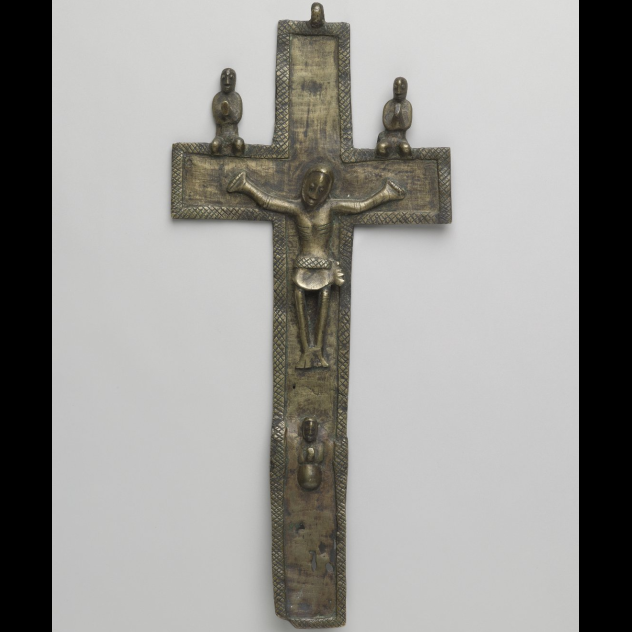
When Christianity came to Africa, imagery like the crucifix was adopted into the vibrant culture that already existed there. When Konoglese artists adopted the imagery of the cross, they added a few other trademark features before its meaning was expanded.
The figure on the cross was given traditional features found in other Kongolese works of art, such as distinctive, protruding eyes. His legs are blended and end in a single, flattened foot, a feature that was supposed to increase the spiritual power of the image. Two other figures are usually added to the top of the cross, watching over Christ and posed as if they’re praying. The Christian cross itself became something that was traditionally thought to be empowered not only with spiritual energy, but with the power to intervene on the behalf of those that carried it. It became a protective talisman, and it was thought to aid the faithful in matters from relieving drought to curing the sick to increasing fertility.
The Kongo were voluntarily converted to Christianity in 1491, but it’s thought that the conversion was more for economic and political reasons than out of any true change of faith. Translations of Christian works and texts suggest that the people retained some of their traditional beliefs, resulting in a new form of the religion that allowed for images like the crucifix to become not just Christian imagery but also powerful spiritual fetishes. The image of the figure and the nails was closely associated with another type of Kongolese and African fetish, the nkisi.
6 Singiti
These typically male statues were used throughout the Congo to represent respected Hemba tribal elders. Most were placed in shrines, where they were thought to cement the relationship between the present and the past. Through the singiti, ancestors could influence events surrounding the lives of their descendants. The singiti was also a very physical way to recognize the past influence that a family member might have had in the community and to give a certain amount of social standing and authority to the living.
Singiti have a very distinctive look, and it’s unmistakeably peaceful. The figures are carved with their eyes partially closed, exaggerated features, and, in many cases, intricately designed hair—a trademark of the Hemba, first recorded by Robert Livingstone.
The shrines where the singiti sit are small huts dedicated to them; there are usually more than one in the shrine. It’s a reminder that the world of the living and everything that belongs to living people came from those who have died, their actions, and their sacrifices. It’s believed that the tradition of carving the figures with large heads and protruding foreheads is symbolic of the knowledge that the ancestors possess. It’s also been suggested that ancestral spirits live in the singiti.
5 Gope Boards

Gope (spirit) boards come from Papua New Guinea. Typically carved from wood salvaged from old canoes, the boards were given stylized human faces and a circular navel, among other decorative features. They were thought to contain protective spirits, which would enter the board through the carved navel. These sacred boards were a tangible link between the past and the present and an access point for nature spirits, ancestral spirits, and other protective entities. When not being used in ceremonies, they would be hidden away.
The largest of the gope boards were traditionally used to watch over buildings and structures that were important to the whole clan, like the longhouses in which they were stored. Smaller gope boards would be presented to boys who hadn’t yet passed their initiations into manhood and would be hung from the wall over their beds to protect them as they slept and guide them on their journey into manhood.
The faces carved into the boards represented the ancestors, thought to watch over and protect their descendants. Carved by hand without a guide, gope boards were highly symmetrical. They were carved beginning with the face and moving outward from there. Although most have similar shapes and patterns, they’re usually unique. Those that don’t have a navel carved into them were usually done for sale outside of the community.
4 The Billiken
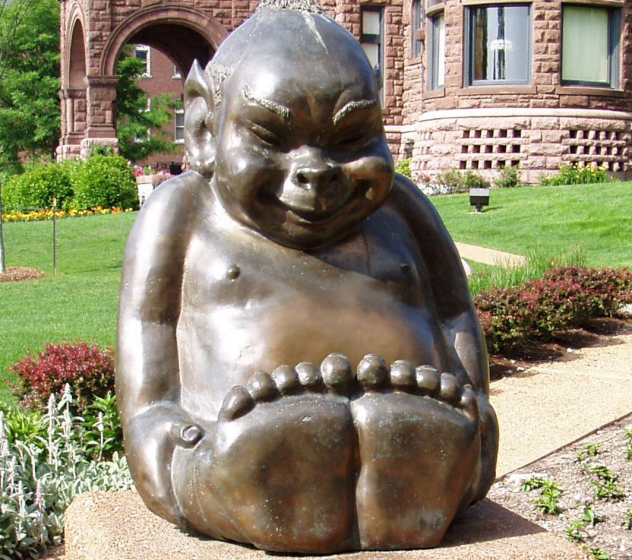
Some dolls and fetishes don’t need an ancient pedigree to spread across an entire country. In 1908, a Kansas City art teacher named Florence Pretz patented her design for a creepy little man she called the Billiken. It went absolutely turn-of-the-century viral, and within weeks of its patent, it was everywhere. Marketed as the God of Happiness or as the God of Things As They Ought To Be, the Billiken started out with its own line of plaster figures after its first public appearance in a Canadian magazine. The Billiken started out as a fairy and became a god—not a bad promotion.
After Pretz appeared in a magazine spread dressed in a kimono and lighting incense in front of one of the Billiken statues, it gained some more credibility as a good luck charm worthy of worship. Pretz further claimed that she had been dreaming of the Billiken, and of the Orient, for as long as she could remember, citing a past life in Asia for her inspired connection with the little guy. With a little help from a marketing team, the Billiken became the charm doll of the century.
The Billiken has been largely forgotten as far as pop culture goes, but it’s still around, most notably in the form of St. Louis University’s strange mascot. The university isn’t sure just how the Billiken came to be so closely affiliated with the college, but they believe it happened around 1910, in the midst of what they call “Billikenmania.” One story suggests that one of their coaches bore a striking, and unfortunate, resemblance to the charm doll, while others claim it came from a college supporter named Billy Gunn. Still others suggest the naming came when, after a particularly successful practice, coaches were said to have been grinning like the Billiken.
3 Mossi Dolls
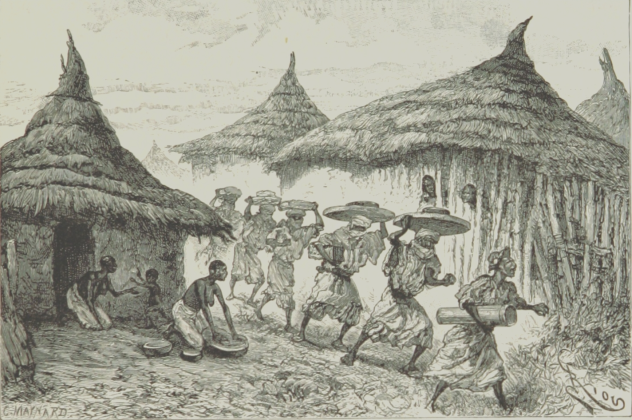
The dolls carried by Mossi women and children in Africa lead a pretty cool double life. Given to young girls, they’re carved with elaborate hair and faces, and many are engraved with the scarring patterns that are symbols of passage into adulthood. Called bliga, or “child,” the dolls are treated exactly like that. They’re carried around, fed, washed, and groomed like a real baby, and people interacting with the child usually treat the doll as if it were a real baby, giving it a bit of food or some trinkets. They practice all of the aspects of child-rearing on the doll, which includes the daily practice of giving enemas.
The doll stays with the woman into adulthood. The better she cares for her doll, the more successful she’ll be when it comes time to have her own children. When she does have children, the first drops of her milk are given to the doll, which is carried by the mother before being passed on to younger female relatives. Caring for the doll and respecting it doesn’t just help to guarantee a woman’s fertility, but it’s also thought that the childbirth rituals which include the doll will help to make sure that the soul of the newborn baby will properly unite with its body.
A woman who has married but hasn’t conceived a child will often use the doll as a sort of surrogate child, as it’s believed to be a direct line of contact with either her own ancestors or the kinkirsi. The kinkirsi are occasionally malevolent spirits that must be appeased in order to give their protection. They’re also associated with being able to bestow the blessings of fertility on a couple and are particularly associated with the birth of twins. This was something of a last resort, though, because of the stigma that’s associated with bearing twins. Multiple babies has long been viewed as something that animals do more commonly than people.
2 Mbulenga

Mbulenga is a term denoting ornately carved figures that are holding a vessel of some sort in one hand. They are thought to be able to bring good luck and beauty to the child whom they watch over; the vessel is for various ingredients that the figure is given to activate its power. Typical offerings included the bark of a sacred tree, red feathers taken from a grey parrot, and hair from a female albino. The figures also typically wore a spiked headdress of some sort, used to hold offerings.
Sacred to the Bens Lulua people, the figures are often carved with distinctive patterns that serve another purpose. Bens Lulua is a sort of catch-all term applied to the many different people that live near the Lulua River. Over the years, there have been a series of immigrations and migrations, wars, invasions, and mixing of individual cultures. Each of those cultures still holds onto their own ethnic identity, which is reflected in the scarification patterns that the mbulenga is engraved with.
The mbulenga is given its first offerings, a combination of magical ingredients and kaolin, when a child is born. They were also fed regularly, and it was believed that their power could be magnified by the application of a mixture of oil and red camwood powder.
1 Tsantsa
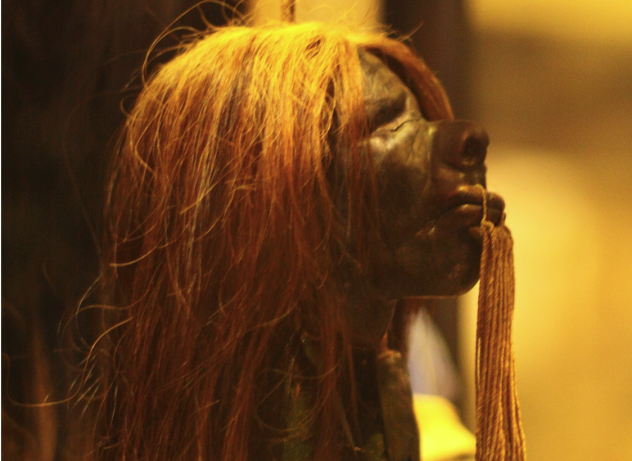
The tsantsa is a shrunken head, and most of the time, we’re so taken aback by the practice and how it’s done that we overlook the fact that it’s an incredibly important totem. They’re created by the Shuar and Jivaro people of South America, and true tsantsa can be identified by a skin color that’s created by the application of charcoal dust, wooden pegs, or vegetable fibers used in the sewing of the lips, and the stitching done around the eyes, ears, and neck.
According to Shuar beliefs, there are a couple of different kinds of souls. The arutam soul is one that, when it’s in a body, prevents complete death. When a person does die, it calls into existence an immortal creation called the arutam wakani, which is heralded by storms or heavy winds. A person who possesses an arutam soul can create something called the muisak, which is an avenging entity that can take the form of a demon in order to exact revenge for the death of the body.
That’s where the practice of creating the shrunken heads comes in. The muisak lives in the person’s head, and if the corpse is left alone, it gives the miusak the freedom to travel to any other dead body that it needs to in its quest for retribution. Ultimately, it’s thought to take a natural form, favoring animals like poisonous snakes. Those that are killed by snakes (or by falling trees, oddly) are thought to have been killed by the demonic form of the muisak. Taking the head of a dead person and shrinking it is thought to trap the muisak inside and prevent it from getting its revenge.

